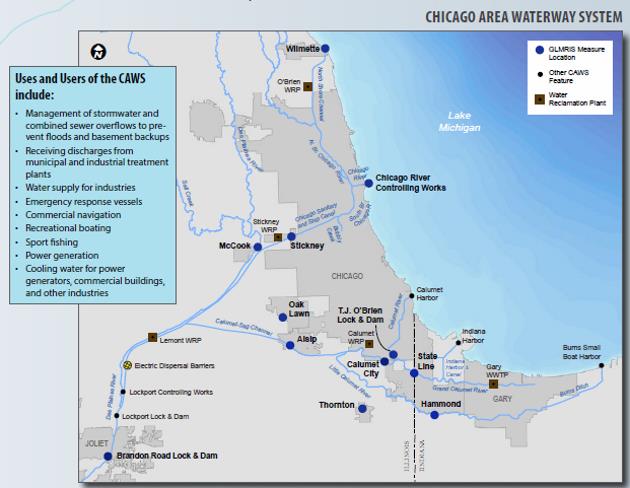Great Lakes and Mississippi River Interbasin Study
The Chicago Waterway System (CAWS), a series of canals and rivers in and near Chicago, artificially connects the Great Lakes to the Mississippi River basins. The waterway serves as a vibrant transportation corridor, a route for pleasure boats, and a water management system. The high importance and reliance of the waterway requires all studies to take into account the transportation, economic, and water management implications of introducing a new technology or barrier system.
GLMRIS is the Great Lakes and Mississippi River Interbasin Study conducted by the United States Army Corps of Engineers (USACE) as authorized by the United States Congress. USACE conducted the study in consultation with other federal agencies, Native American tribes, state agencies, local governments, and nongovernmental organizations.
The goal of GLMRIS is to present a range of options and technologies to prevent the transfer of aquatic invasive species (AIS) between the Great Lakes and Mississippi River basins through aquatic pathways. The GLMRIS Report addresses this goal by presenting eight alternative plans, developed with two objectives:
- Preventing AIS transfer
- Mitigating impacts to resources (uses) and users for any plan implementation.
Impacts to uses and users of the waterways affected by the plans were evaluated, and methods to address significant impacts are included in the alternatives. The GLMRIS Report does not recommend a specific plan. However, evaluation criteria are included in the report that could be used by American decision makers to further evaluate and compare alternative plans.
